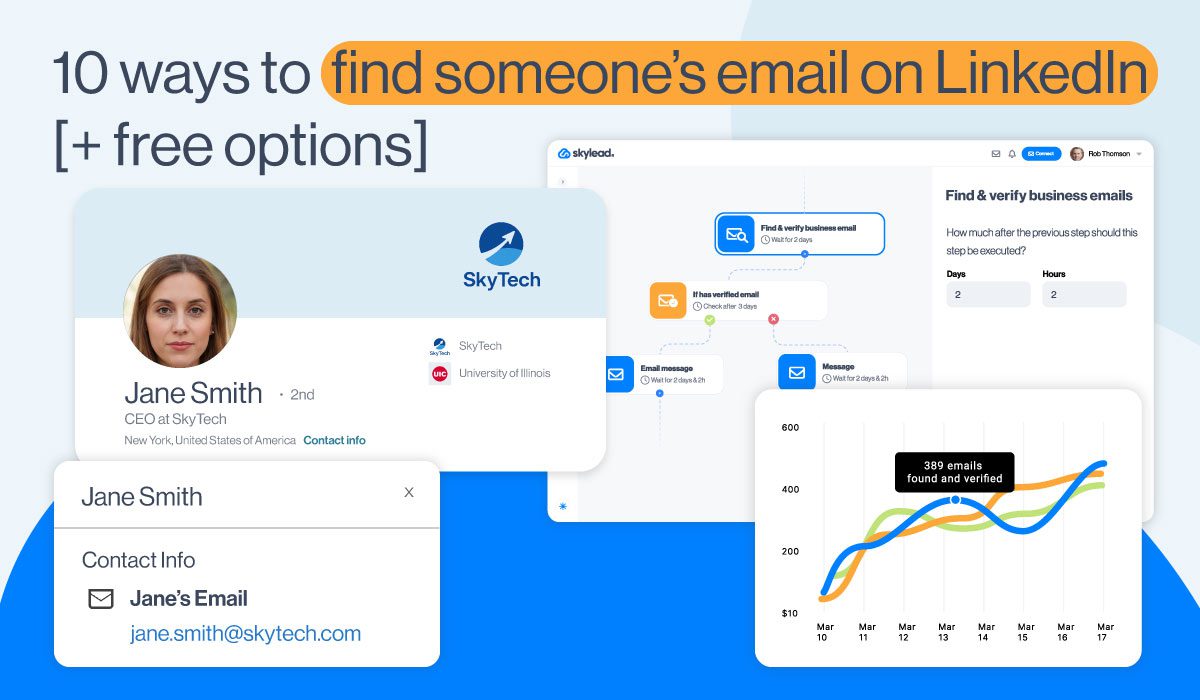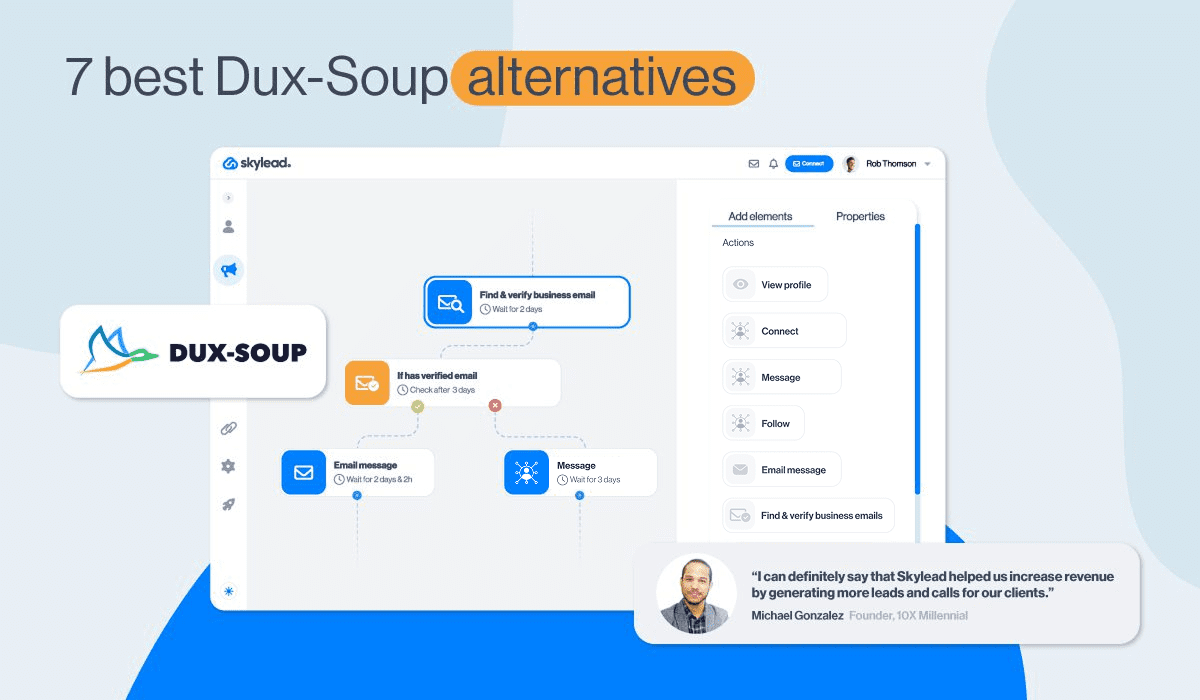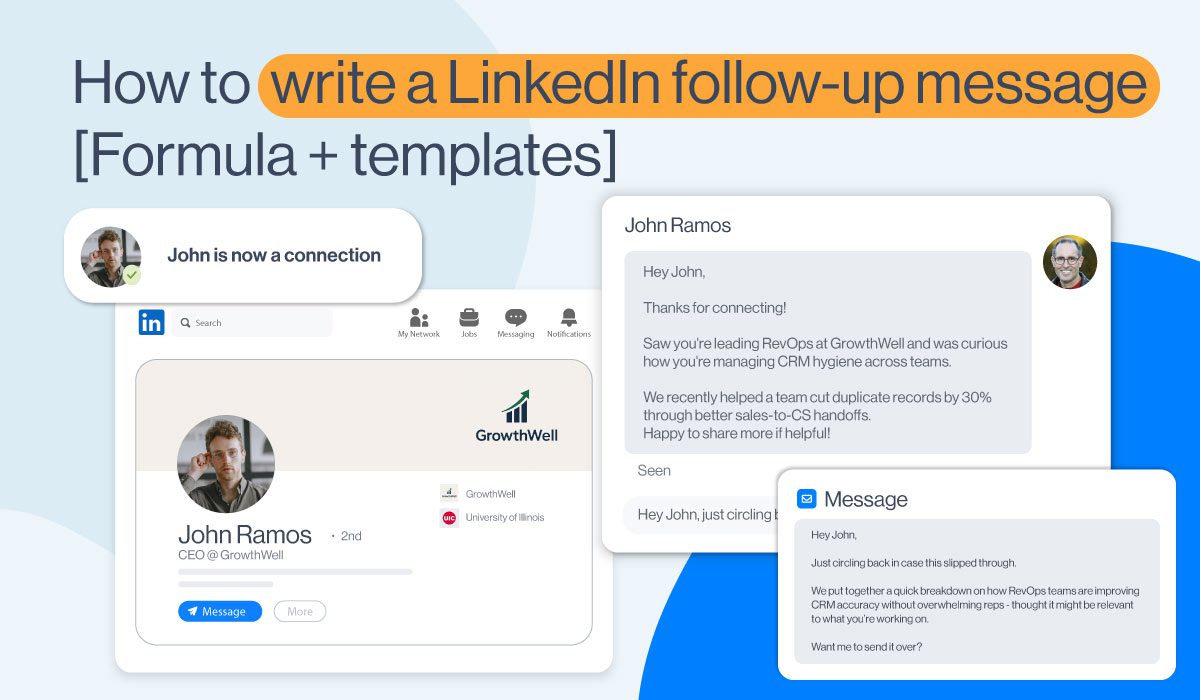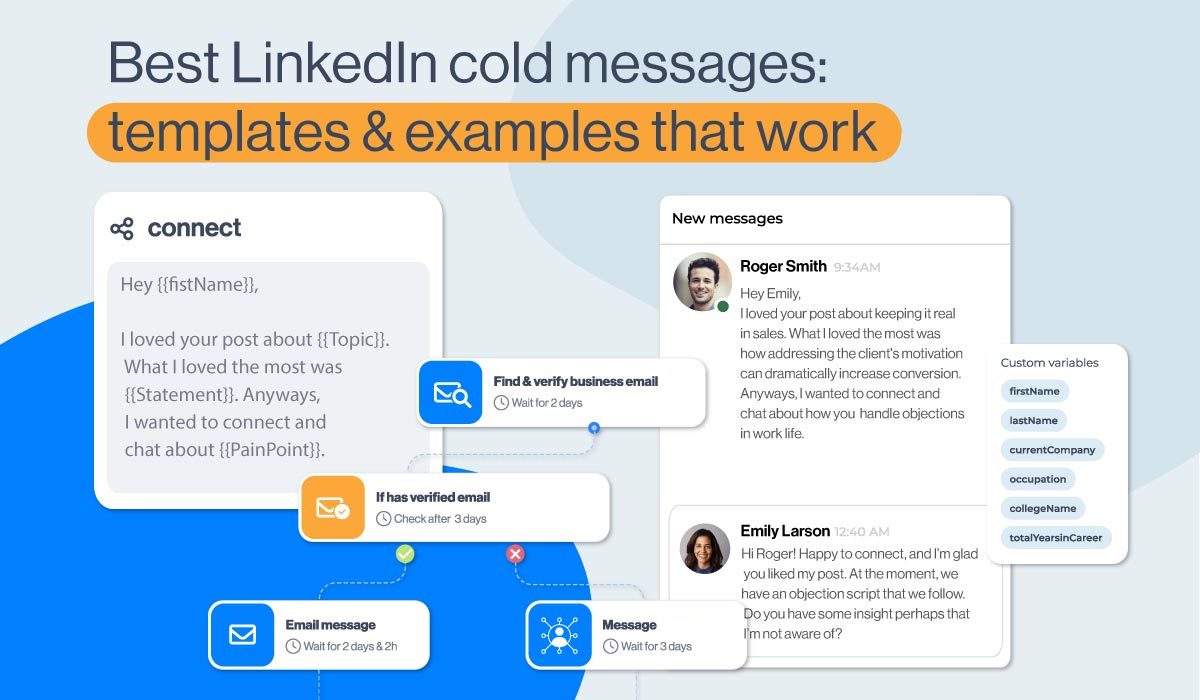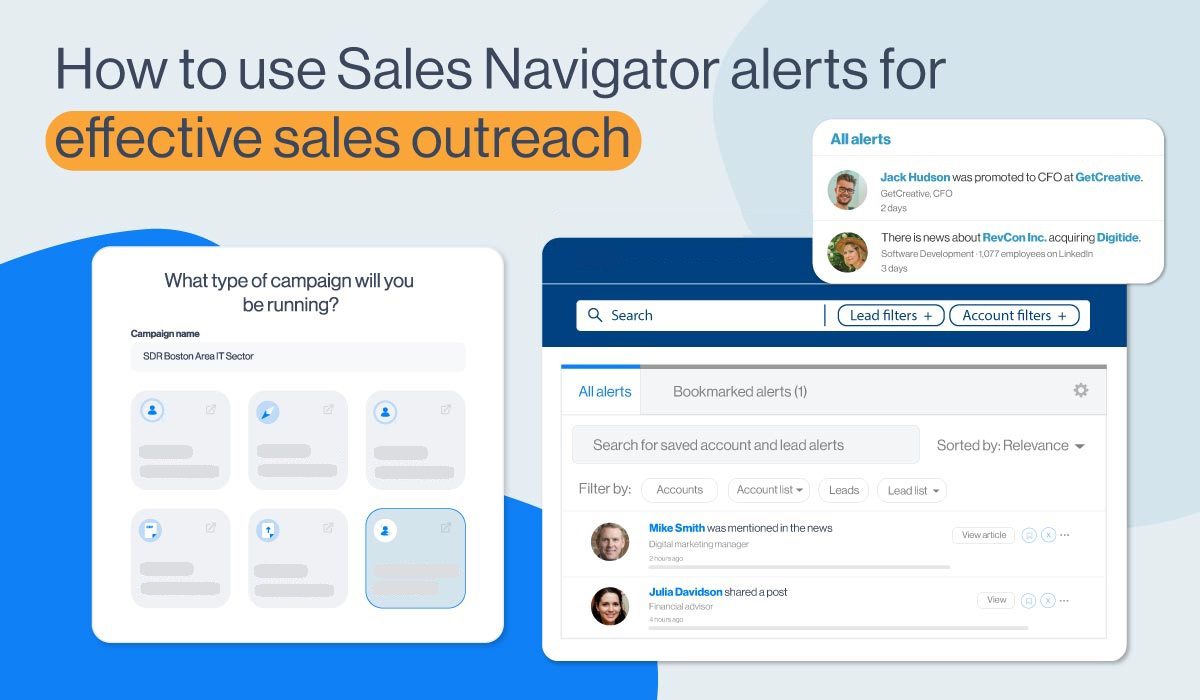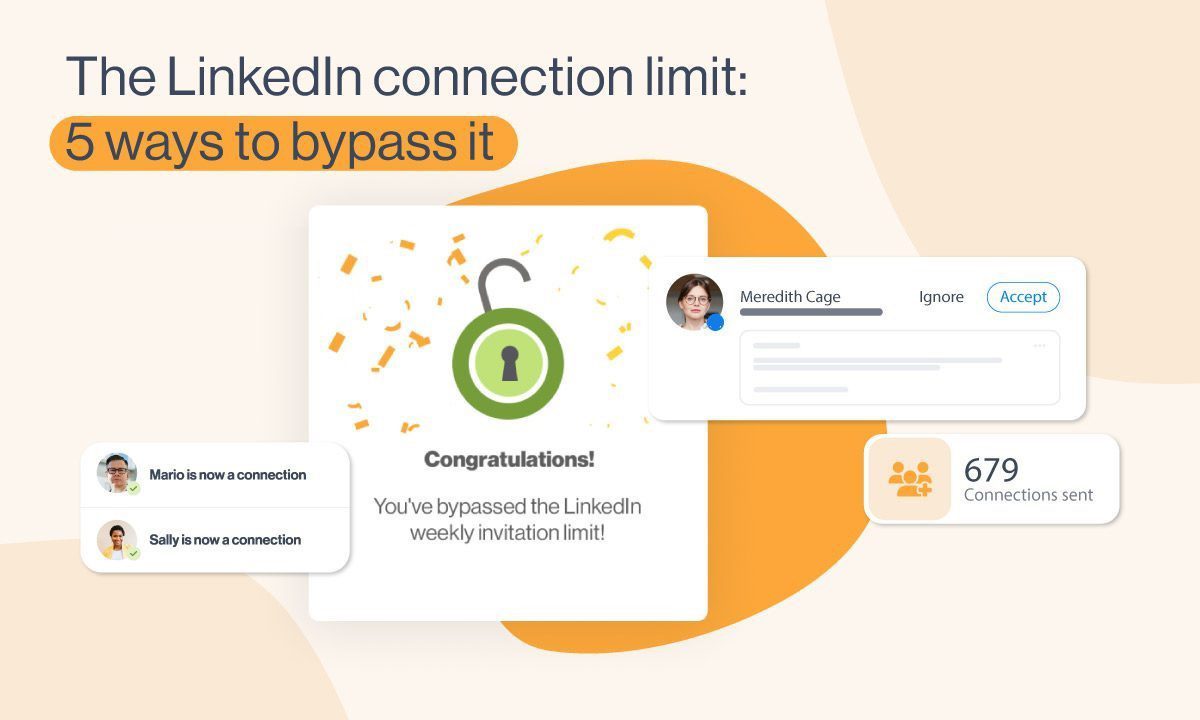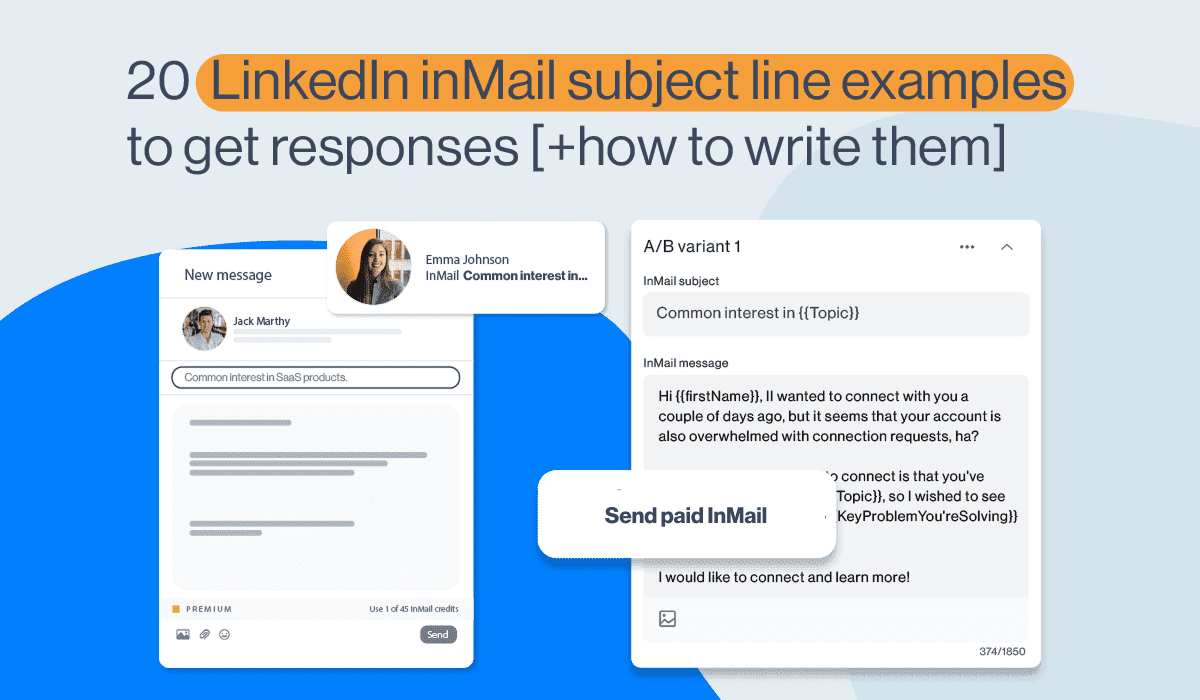How to network on LinkedIn in 2026: 11 Dos and Don'ts
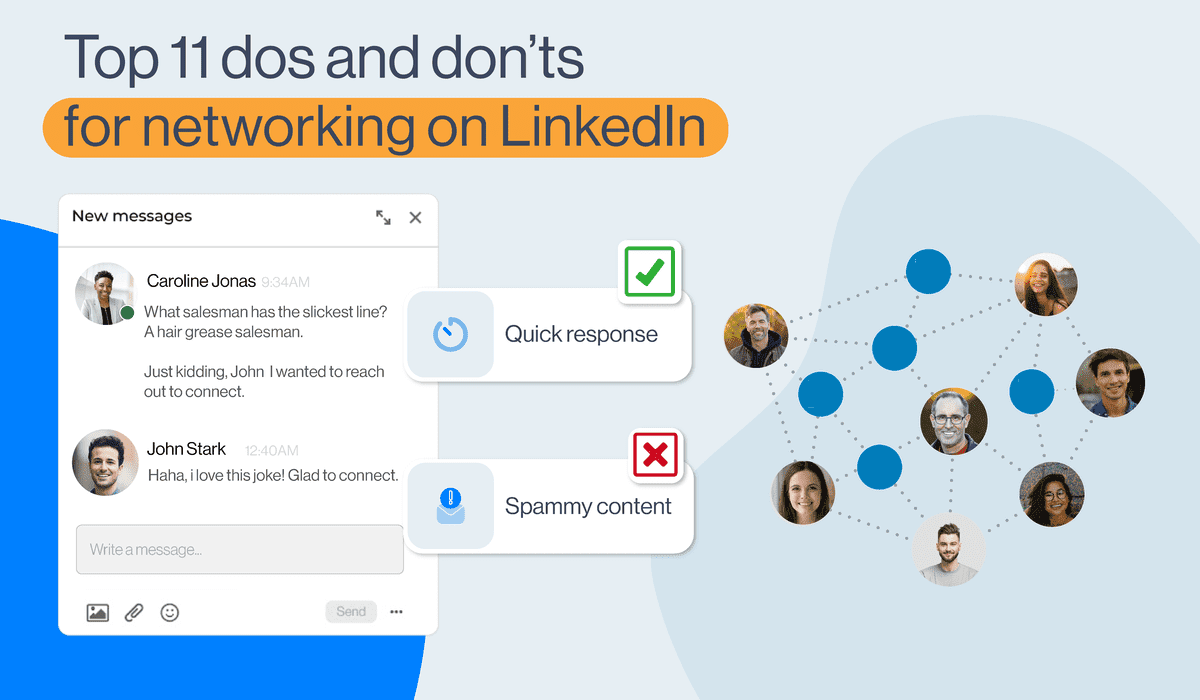
Disclaimer: Skylead is not affiliated, endorsed by, or connected with LinkedIn in any way.
It’s 2026, and LinkedIn is still the most essential and fastest-growing professional network globally. As such, it is full of potential clients, connections, and different growth opportunities.
It takes only one wrong step to lose the deal of a lifetime or make a wrong impression that could cost you money and your business image. That’s why proper professional etiquette is important for building and maintaining your brand.
To ensure this doesn’t happen to you, we decided to share how to network on LinkedIn and some dos and don’ts from our own experience.
How to network on LinkedIn
Networking on LinkedIn is a powerful tool for building professional relationships, expanding your career opportunities, and staying updated in your industry. And we, as a company, can vouch for that.
We’ve been in the industry for 5 years, and LinkedIn is our second nature. For example, our CEO, Relja Denic, first started networking on LinkedIn in 2019. Since then, he managed to gain about 25K connections and 22K followers. Not to mention our other crew members.
That said, here are the actions that will help you understand how to network on LinkedIn.
#1 Connect with people from your area of expertise
To expand your network on LinkedIn, the first choice would be to find people whose occupation is the same or similar to yours. You can exchange tips, tricks, and valuable resources.
That said, your connection request message can sound something like this:
Hey {{firstName}},
I saw that you are also {{Occupation}} and wanted to connect with you and exchange our experience, tips, and tricks. 😊
#2 Connect with your target audience
One of the best ways to network on LinkedIn and research your market is to ask your target leads yourself - a practice rooted in modern sales engagement where listening comes before pitching.
Don’t be afraid of how to network on LinkedIn with them. Simply say you’re exploring their position and current challenges. Like this:
Hey {{firstName}},
I noticed you work as {{Occupation}}. I am currently researching {{Occupation}}’s challenges and pain points, so I was wondering if you’d like to connect and chat about it. 😊
#3 Attend LinkedIn events and mingle
Another way to network on LinkedIn is to attend LinkedIn events and chat with other attendees. To find a list of attendees, apply for the event yourself by clicking the Attend button.
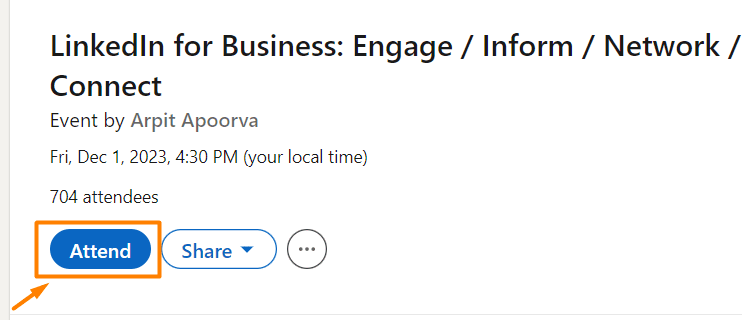
Then, hit Attendees to get a list of all the people who are attending the event.
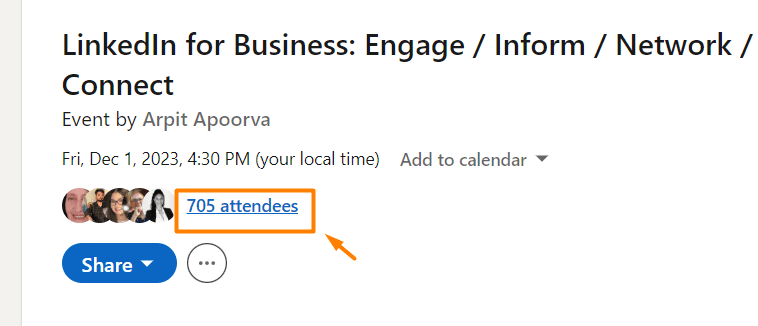
You can then send them a connection request such as this one:
Hey {{firstName}},
I noticed you’re also attending {{eventName}}. I’d love to connect and chat about our experience and the value we get from there!
Or you can simply send them a message from the Networking tab.
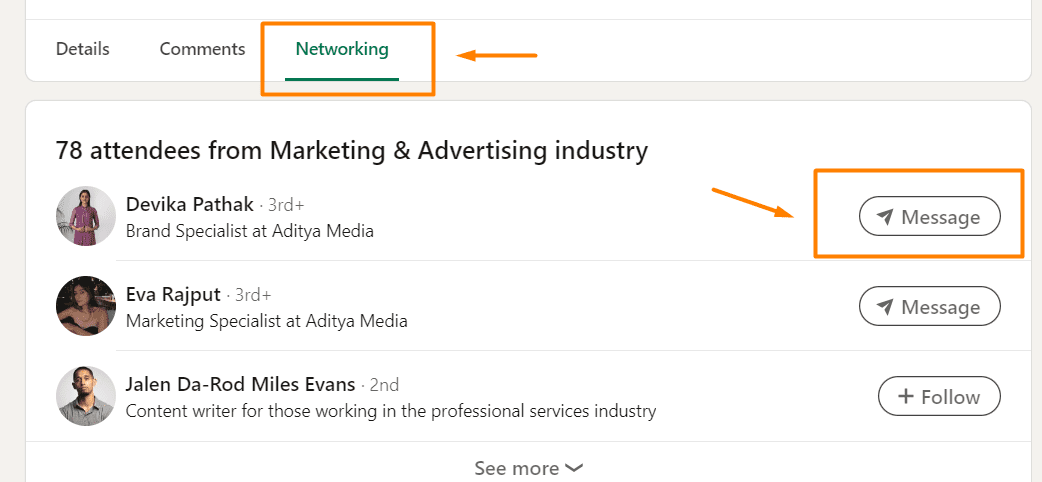
#4 Join LinkedIn groups
LinkedIn groups are considered to have no engagement whatsoever. However, that doesn’t stop you from approaching each member individually and genuinely connecting. That said, join the LinkedIn group that aligns with your and your potential client’s interests and industry.
Being part of a LinkedIn group whose members are from the same industry as you gives you a chance to learn from other people’s experiences, know what your competitors are up to, and connect with your colleagues.
On the other hand, being part of a LinkedIn group whose members are your potential clients helps you understand their needs, concerns, and what they expect from certain products or services (that might be the ones you are offering).
In any case, it’s a win-win situation!
Extra tip: You can also target members of a specific LinkedIn group if you upgrade your LinkedIn plan to Sales Navigator.
That said, to get to the members’ list, hit Show All in the upper right corner.
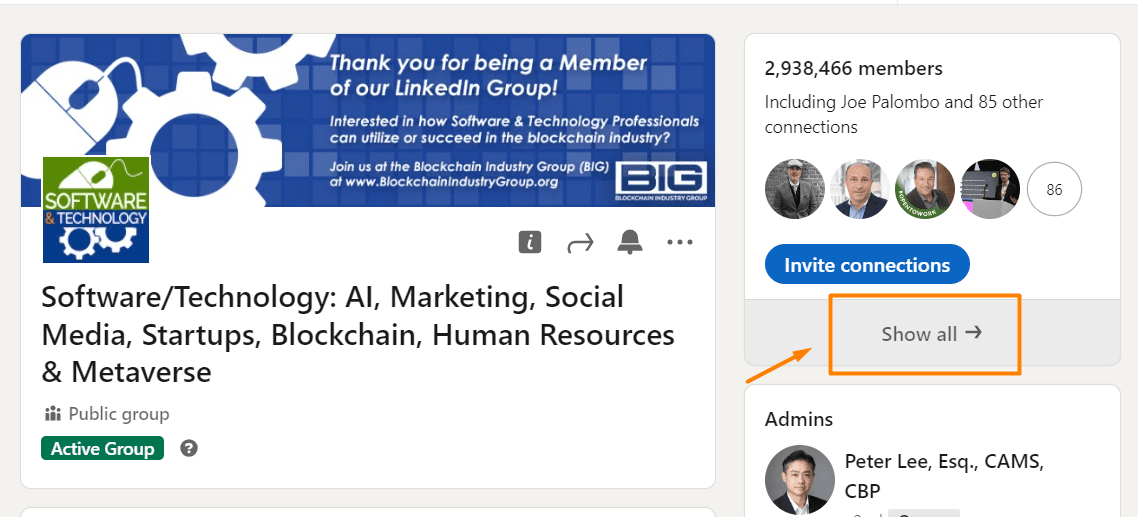
Then, send them a message explaining why you wish to connect with them. If, for example you joined a group with people from your industry, give this message a go:
Hello {{firstName}},
I noticed you are also a member of {{groupName}}. I would love to connect with you since I can see we're both in the {{industry}}.
#5 Create content and engage with people who comment
If you’re passionate about creating and posting content on LinkedIn, you should know that this can be another form of networking on LinkedIn. For example, a 1st-degree connection can comment on your post. In return, you can like their comment, respond, or message them and continue the conversation.
In addition, if your post reaches your 2nd or 3rd-degree connections and they comment or like a post, send them a connection request. However, be sure that your connection message is not out of context.
6 dos for networking on LinkedIn
Personalize invites to connect
LinkedIn is a place to network, but that doesn’t imply randomly adding anyone you run into.
It is rather a platform for meaningful business connections and as such it is highly recommended to reach out to people you either know or are interrelated with due to the nature of your industry.
Either way, it is always a good practice to send a personalized Invite to Connect.
Firstly, if you are reaching out to someone you don’t know, why risk being banned on LinkedIn in case they click on the I don’t know this person option? A certain number of these will get you restricted, you know?
Secondly, many people on LinkedIn appreciate Invites to Connect with an explanation of why they should connect with you. It doesn’t need to be a full-on sales pitch, but rather an interest or a reference in common. This is why a well-planned LinkedIn prospecting and targeting people attending the same event or those who are members of the same LinkedIn group can work so well to your advantage.
If you follow one simple tip such as this one, you will significantly increase your success on LinkedIn and stand out from numerous people who don’t consider it at all.
Complete your LinkedIn profile
Most people will not reply if your LinkedIn profile is incomplete. Or if they’re nice, they will do it reluctantly. This is because without a profile picture, experience, and LinkedIn summary, nobody can get an entire picture of who you are and what you’re about, and they would think the profile is fake. That said, to keep your integrity, finish up your entire LinkedIn profile.
Respond promptly
Just like with Emails, responding promptly to your Messages, Invites to Connect, and LinkedIn InMails is a sign of professionalism.
Good etiquette implies replying within 24 h.
Of course, the timeframe within which you answer is equally important to the content and tone of your message.
Any of the people you are responding to might be your future client, collaborator, or colleague. Make informed decisions and give confirmed information.
This way you will build the image of a trustworthy, knowledgeable professional with integrity.
And that’s what we all want, don’t we?
Introduce people
Introducing connections to each other creates positive social capital for you.
It shows that you genuinely care about people making meaningful connections that could benefit the industry.
Furthermore, a highly appreciated gesture of this kind will invoke the law of reciprocity.
Namely, your connections will most likely return the favor by introducing you to other professionals that are, in their opinion, good for you.
There is no better way of growing your business network than through positive word of mouth. Remember that the best advertising for business is free. But it takes time to build trusted and loyal connections.
So, stick to our dos over here.
Stay top of mind
Your lone presence on LinkedIn is not enough for staying top of mind of your connections.
- Post quality content.
- Respond promptly to Messages, Invites to Connect, and InMails.
- Congratulate people on promotions and new jobs in a professional manner, while still showing that you genuinely care.
- Respond to comments and reactions to your posts and tag people you are replying to.
- Post authentic responses to the most interesting discussions.
- Join LinkedIn groups.
Check your SSI
If you run out of networking ideas, check your LinkedIn Social Selling Index Score. It will show you your overall networking status and what networking area you can improve.
5 don’ts for networking on LinkedIn
LinkedIn is NOT Tinder
Avoid adding people just because you like their looks.
Avoid adding people just because.
Don’t start messages with “Hello Dear”, give compliments that are not business-related or argued, or send any type of messages with a strong personal note.
Not only will you be ignored, but you will be marked as a spammer, and most likely earn a reputation as a weirdo.
News travels fast.
People will not be eager to connect with you, let alone do any business with you.
Don’t spam people
Sending irrelevant, long, impersonal messages that don’t bring anything to any of the sides involved cannot earn you a good reputation.
It’s like a story of a girl who cried wolf.
If you keep sending messages that are only spamming other users, once you send something meaningful, nobody will be interested in reading it or answering back.
Save your Messages and InMails for significant business outreach and communication.
Your contacts will appreciate hearing from you less but leading insightful conversations regarding your industries or any other business-related topic.
Don’t post self-serving content
Whether sharing content or replying to messages or a discussion, make sure to provide value first and foremost.
The biggest mistake on LinkedIn is the misconception that people care about what you have to say. They only care about finding solutions to their problems or gaining valuable insights into the industry trends and demands. That’s all.
There is always a way of giving something to your readers while managing to promote your product or services.
Don’t ignore job proposal & invitations
Even if you are satisfied with your current job, you never know what the future holds.
Don’t burn bridges.
Answer to any job or business proposal you might receive. Be polite and professional.
Firstly, you don’t know if life will take you in that direction. The offered position might not even be in line with your future aspirations. However, have in mind that that company has other departments as well.
Secondly, the world is small. The Human Resources Manager that contacted you for that particular job might be the Human Resources Manager for another company in no time. And they will remember if you ignored or were impolite when they reached out.
The same applies to LinkedIn users who write to you regarding business opportunities and collaboration. Maybe you are not interested at the moment, but that’s for sure not the reason not to keep the door open for future contact.
Don’t talk negative about competitors
Social media can be such a negative space.
People have had it enough already.
Not only does everyone want to belong to a positive, proactive, and like-minded community, but posting negatively about your competition is a sign of bad sportsmanship.
Did you know that when you are talking badly about someone, people who are listening are subconsciously attributing all the negative features to you?
Treat others with respect just as you would like to be treated.
Also, have in mind that even when you are commenting on behalf of yourself, people might ascribe your opinion to the general attitude of the company you are currently working for. Be careful about it, especially on LinkedIn which is, as we said before, a professional network.
You are representing your brand, your company, and the industry at the same time.
Frequently asked questions
How can one measure the effectiveness of their LinkedIn networking efforts beyond the Social Selling Index Score mentioned in the article?
Measuring the effectiveness of LinkedIn networking extends beyond the Social Selling Index Score through the analysis of connection growth rate, the relevance of new connections in your industry, engagement (likes, comments, shares) on your content, and direct feedback from your network, reflecting the value and impact of your networking efforts.
What specific strategies can be used to recover from a negative impression or mistake made while networking on LinkedIn?
Recovering from a negative impression on LinkedIn involves acknowledging the mistake directly if it affected specific individuals, demonstrating professionalism in your response, and consistently sharing valuable content to rebuild your reputation. Engaging positively with the community and offering genuine contributions can gradually restore trust and credibility.
Are there any tools or features within LinkedIn that can help automate or facilitate networking activities without violating LinkedIn's policies on automation and spam?
LinkedIn offers native features to help you network, such as LinkedIn Sales Navigator for targeted searches and LinkedIn Learning for professional development. While some third-party automation tools exist, they may violate LinkedIn’s Terms of Service and put your account at risk. That said, if you'd like to support your networking efforts, you can use a sales engagement tool like Skylead, which is 100% compliant with LinkedIn's ToS.
Now you know how to network on LinkedIn. Are you ready for it?
Networking, brand engagement, and generating leads on LinkedIn are the activities that are strongest than they have ever been.
Therefore, LinkedIn is not just your online resume.
It reflects your entire way of doing business and communicating with your leads and customers.
Everything that happens on LinkedIn has consequences, positive or negative, that you have to be ready to take responsibility for.
Since it’s better to be safe than sorry, stick to our tips and you will be just fine.



